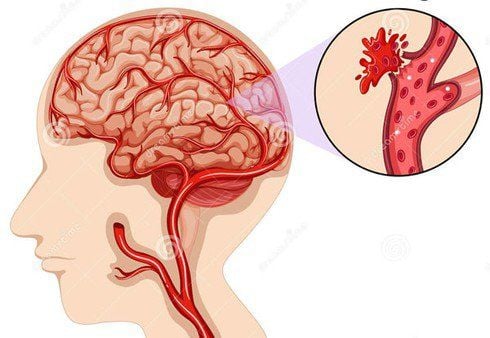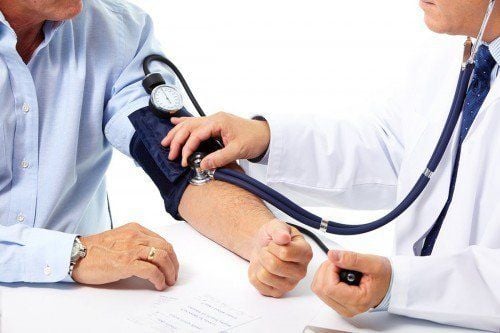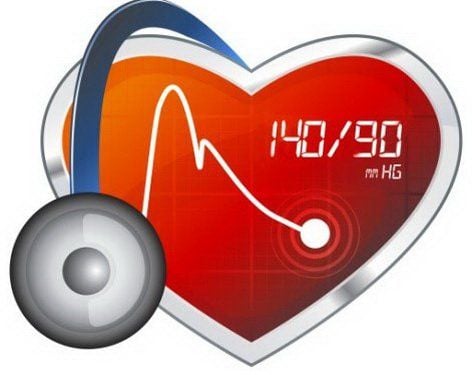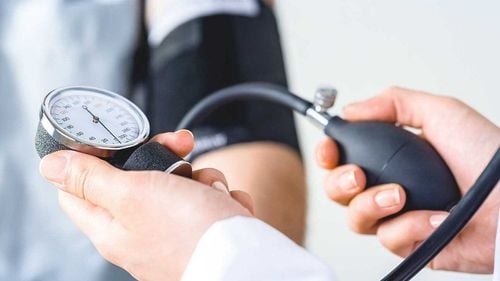This is an automatically translated article.
The article was written by Cardiologist - Department of Examination & Internal Medicine - Vinmec Phu Quoc International General Hospital.The term "malignant hypertension" entered the medical lexicon in 1928 because, at the time, patients with this condition had a similar prognosis to patients with many cancers. However, now that blood pressure lowering therapies can be quickly and safely improved outcomes.
1. Definition of severe hypertension
Most patients with severe hypertension (systolic blood pressure 180 and/or diastolic blood pressure 120 mmHg) do not have acute end-organ damage (so-called severe asymptomatic hypertension or elevated blood pressure). emergency blood pressure).In contrast, some patients with severe hypertension have signs or symptoms of acute end-organ damage. Such patients have hypertensive emergencies. Severe hypertension may be present in patients with or without pre-existing hypertension. In younger individuals (<60 years), diastolic blood pressure is usually 120 mmHg, but there is no specific threshold because people with severe hypertension may develop symptoms if blood pressure is previously normal. (such as in a pregnant woman with eclampsia or a young person with acute glomerulonephritis).
2. Diagnose the cause of high blood pressure

Xuất huyết não là một trong số các nguyên nhân Chẩn đoán tăng huyết áp
● Acute head trauma or injury.
● Neurological symptoms such as agitation, delirium, dizziness, convulsions or visual disturbances.
Focal neurological symptoms may be due to ischemic or hemorrhagic stroke.
Brain hemorrhage .
● Nausea and vomiting, which can be signs of increased intracranial pressure.
● Chest pain, possibly due to myocardial ischemia or aortic dissection.
● Acute, severe back pain, possibly due to aortic dissection.
Shortness of breath, possibly due to pulmonary edema.
Pregnancy, so patients with severe hypertension may develop preeclampsia or eclampsia.
● Use of drugs that can produce a hyperadrenergic state, such as cocaine, amphetamines, phencyclidine, or monoamine oxidase inhibitors, or recent or less frequent discontinuation of clonidine, antihypertensives rather.
Laboratory tests: In addition, the following tests should be performed to assess the presence of target organ damage:
Electrocardiogram
● Conventional chest radiograph
Urinalysis
● Serum electrolytes and serum creatinine
Cardiac biomarker (if acute coronary syndrome is suspected)
Computed tomography (CT) or magnetic resonance imaging (MRI) of the brain (if trauma) head injury, neurological symptoms, hypertensive retinopathy, nausea or vomiting)
CT or MRI supported by transthoracic or transesophageal ultrasound (if aortic dissection is suspected) .
It is often easiest to classify cases of severe hypertension by the target organ being damaged (eg, brain, heart, kidney). Based on the target organ damage will help us determine the target blood pressure index to achieve and the rate at which the target blood pressure is achieved.
Vinmec International General Hospital is one of the hospitals that not only ensures professional quality with a team of leading medical doctors, modern equipment and technology, but also stands out for its examination and consultation services. comprehensive and professional medical consultation and treatment; civilized, polite, safe and sterile medical examination and treatment space.
Customers can directly go to Vinmec Health system nationwide to visit or contact the hotline here for support.













